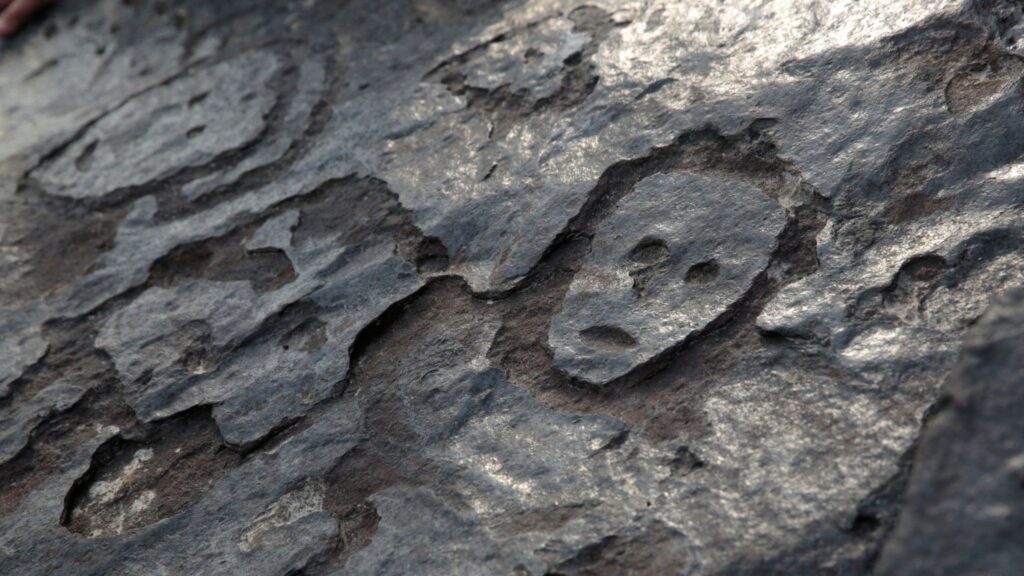
Ancient rock carvings of human face have been revealed by a drought in the Amazon River. These carvings are thought to be around 2,000 years old. They provide valuable insights into the lives of the Indigenous peoples who inhabited the region at the time.
Receding waters in the Brazilian Amazon, are attributed to historic levels of drought. It has unveiled an enigmatic human face sculpted into stone, believed to date back approximately 2,000 years.
Amid the region’s most severe drought in over a century. Amazon Waters in the Brazilian Amazon have plummeted to record lows.
This unprecedented drop in water levels has unveiled a plethora of never-before-seen rock carvings. Poised to offer archaeologists profound insights into the cultures that once carved them.
While scientists speculate that the engravings are likely prehistoric or pre-colonial, their precise origins remain shrouded in mystery.
The discovery site, known as Ponto das Lajes, is situated on the north shore of the Amazon, at the confluence of the Rio Negro and Solimoes rivers.

Some Speculations
Researchers have identified areas exhibiting smooth grooves in the rock. Suggesting that this may have been a location where Indigenous inhabitants once honed their arrows and spears, long before European influence.
Archaeologist Jaime de Santana Oliveira stated, “We cannot date them exactly, but based on evidence of human occupation of the area. We believe they are about 1,000 to 2,000 years old,” in an interview.
Also See: NASA Unveils Discoveries Shedding Light On Earth’s Origins
While some of the carvings were initially unearthed in 2010. The recent historic drought has revealed a wider array of sculpted human faces.
“This time we found not just more carvings but the sculpture of a human face cut into the rock,” declared Dr. Oliveira. She is affiliated with the National Historic and Artistic Heritage Institute (IPHAN).

Effects Of Drought
This year’s Amazon drought, exacerbated by a severe deficit of rainfall, has been notably more intense. The Rio Negro, the Amazon river’s largest tributary, has receded by 15 meters (49.2 feet) since July, marking its lowest level in 121 years.
The drought’s impact has been acutely felt in the Rio Negro watershed in northern Amazonas. As well as in portions of southern Venezuela and southern Colombia.
Atmospheric scientist René Garreaud from the University of Chile attributed the primary cause of this extreme drought to El Niño, stating, “Overall, this is a pretty unusual and extreme situation.”
In addition to revealing extensive stretches of rocks in the region. The receding water levels have contributed to disruptions in the water supply for hundreds of communities. As well as alarming die-offs of fish and dolphins.

[…] Also See: Ancient Human Face Carvings Found In Amazon Waters […]